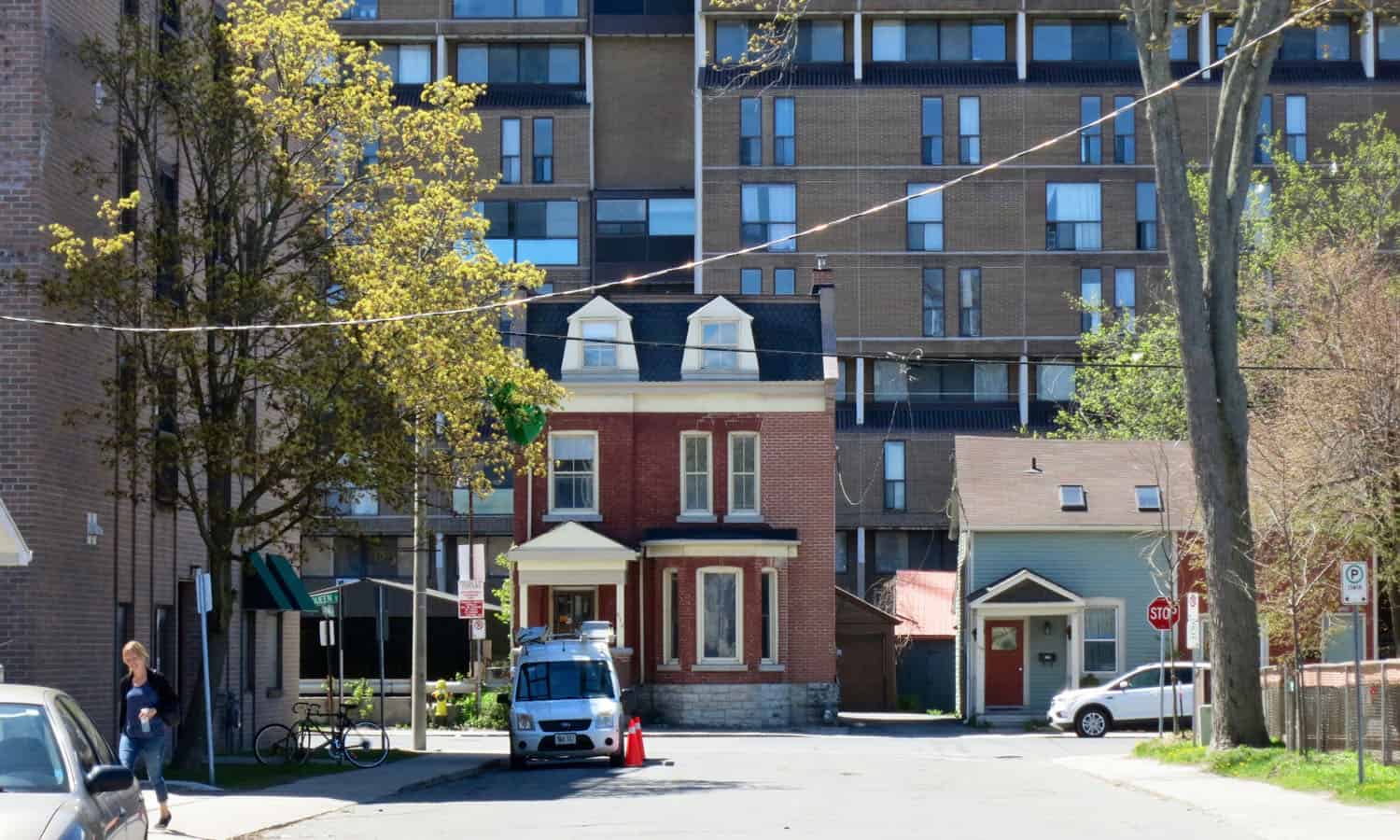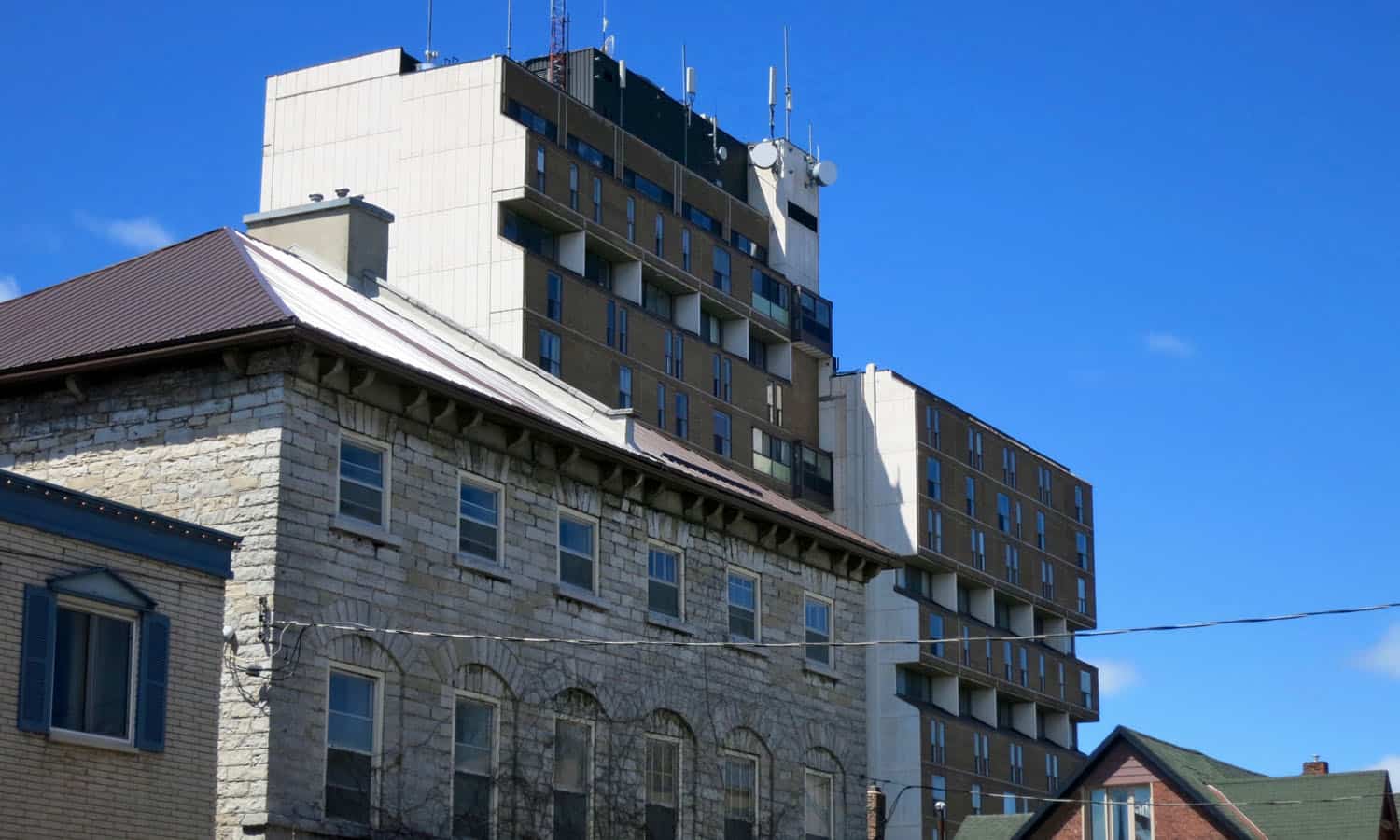Elrond College
Known since the 1980s as Princess Towers, Elrond College was a student-driven response to the housing crisis at Queen’s University. Inspired by student-run cooperative residences such as Rochdale College in Toronto, Elrond College was a radical social, economic, and architectural experiment. Designed by Massey medal-winning Irving Grossman, the project was a fusion of modern movement principles and high-density urbanism with a grassroots movement of communal and cooperative living.
Spurred by a utopian impulse for a community-managed experiment in cooperative living, Queen’s University students succeeded in obtaining financial support from the Alma Mater Society, the university administration, and the federal government in the form of a loan from the Canadian Mortgage and Housing Corporation (CMHC). The project was named Elrond College, after a character in Tolkien’s The Lord of the Rings: “Elrond’s house was perfect, whether you liked food or sleep or story-telling or singing (or reading), or just sitting and thinking best, or a pleasant mixture of them all.” The use of the term “college” had a similar light-hearted spirit, as there was neither a formal curriculum nor degree-granting status.
The 18-storey building was designed for 840 residents within 184 apartments of varying sizes and types. Grossman was influenced by the work of Le Corbusier, specifically the concept of maisonettes; that is, multi-storey apartments that spanned the width of the building. At Elrond, skip-stop elevators served specific floor levels. This arrangement had numerous benefits such as eliminating the need for corridors on many floors as well as providing cross-ventilation. Accordingly, the community had cooperative units called “neighbourhoods”, each of which straddled several floors of the tower. The various unit types and room arrangements are expressed on the exterior elevations. Grossman’s intention to clad the concrete walls in brick was not executed due to financial reasons.
Celebrated at one time as the highest building between Toronto and Montreal, Elrond College anticipated a high-density urbanism for Kingston’s main street. This did not materialize, as the construction of Elrond College occurred just as the nascent heritage conservation movement was emerging.
The experiment was short-lived. CMHC foreclosed in 1980, and the property was sold. Since that time, the building has been operated as market-rate rental apartments. The tower continues to be a visual landmark within Kingston.





